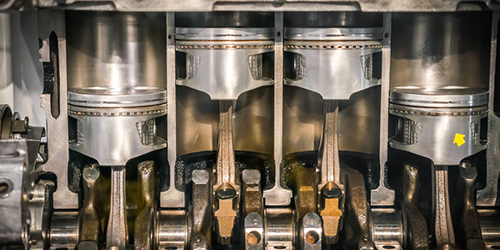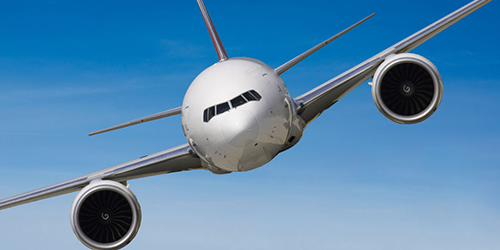Defense Vibration & Isolator Applications
| Environment | Equipment to be Protected | Sources of Vibration-Shock- Noise |
Other Destructive or Deteriorative Conditions |
Applicable Specifications and Typical Vibration, Shock, Noise Input |
Desirable Isolator Characteristics |
Applicable Barry Isolators or Systems | |
|---|---|---|---|---|---|---|---|
| Military Vehicles Tanks, Trucks & Jeeps  |
Cargo and passengers. Indicators and controls. Mechanical, electrical hydraulic, pneumatic operating components. Communications equipment. Fire control equipment. |
Engine. Normal road shock. Off-road terrain. Gunfire. |
Heat and cold. Humidity. Fungus. Lubricants. Chemicals, hydraulic fluids, etc. Sunlight and ozone. Sand and dust. |
Vibration: Package Test (bounce test). Shock: MIL-S-901. Typical Vibration Input: 5 Hz 1.00” D. A. Typical Shock Input: 250 - 1000 g @ 2-6ms. |
Natural frequency 25-35 Hz. Attenuate high-frequency road & terrain shock and transient vibrations. Designed to ensure equipment survival. |
||
| High Performance Aircraft Piston Engine  |
Flight recorder; Air data recorder, Radar; Radios. Gyroscopes; Instrument panels. Engine pressure ratio transducers. Radar antennae; Antenna couplers. Instruments, indicators, gages, etc. Electronic countermeasures equipment. Fire control radar & computers. Bomb racks & sights. Cathode ray display tubes. Integrated avionics packages. |
Propulsion system (Warm-up & Flight) Air turbulence. Landing impact. Taxiing. Amplified vibration caused by structural resonances. Gunfire. |
Temperature and humidity extremes. Altitude. Chemical action of hydraulic fluids, fuels, lubricants. Sunlight and ozone. Salt Spray. Fungus. Sand and dust. |
MIL-E-5400; MIL-E-5272; MIL-STD-810 Typical Vibration Input: 5-10 Hz .080” D. A. 10-15 Hz .41 g. 15-75 Hz .036” D. A. 75-1000 Hz 10 g. Typical Shock Input: 15 g - .011 sec. 30 g - .011 sec. (crash safety). MIL-C-172: Transmissibility (max) at 23 Hz T<1.00 at 30 Hz T<.35 at 500 Hz T<.20 |
Natural frequency 10-25 Hz. All attitude performance for combat aircraft. Maximum isolation efficiency. Low amplification at resonance. Minimum rotational coupling. Minimum shock output. Minimum sway space. Minimum size and weight. Electrical grounding. Designed to ensure equipment survival |
|
|
Jet Transports & Bombers |
Flight recorder; Air data recorder. Radar; Radios. Gyroscopes; Instrument panels. Engine pressure ratio transducers. Radar antennae; Antenna couplers. Instruments, indicators, gages, etc. Electronic countermeasures equipment. Fire control radar & computers, Bomb racks & sights, Cathode ray display tubes, Integrated avionics packages. |
Propulsion system. Air turbulence. Landing impact. Taxiing. Amplified vibration caused by structural resonances. Gunfire. |
Temperature and humidity extremes. Altitude. Chemical action of hydraulic fluids, fuels, lubricants. Sunlight and ozone. Salt Spray. Fungus. Sand and dust. |
MIL-E-5400; MIL-E-5272; MIL-STD-810 Typical Vibration Input: 5-10 Hz .080” D. A. 10-15 Hz .41 g. 15-75 Hz .036” D. A. 75-1000 Hz 10 g. Typical Shock Input: 15 g - .011 sec. 30 g - .011 sec. (crash safety). MIL-C-172 (general reference for size & hardware requirements). |
Natural frequency 10-25 Hz. All attitude performance. Maximum isolation efficiency. Low amplification at resonance. Minimum rotational coupling. Minimum shock output. Minimum sway space. Minimum size and weight. Electrical grounding. Designed to ensure equipment survival Note: Isolator characteristics are a function of use & location in airframe. Most severe vibration from high speed. Low level flight is dense, turbulent air. |
|
|
Jet fighters, interceptors, attack bombers, Special-mission aircraft. |
Radar; Radios. Air data recorder. Gyroscopes; Instrument panels. Engine pressure ratio transducers. Radar antennae; Antenna couplers. Instruments, indicators, gages, etc. Electronic countermeasures equipment. Fire control radar and computers. Bomb racks and sights. |
Propulsion system. Air turbulence. Landing impact. Taxiing. Amplified vibration caused by structural resonances. Gunfire. |
Temperature and humidity extremes. Altitude. Chemical action of hydraulic fluids, fuels, lubricants. Sunlight and ozone. Salt spray. Fungus. Sand and dust. |
MIL-E-5400; MIL-E-5272; MIL-STD-810. Typical Vibration Input: 5-10 Hz .080” D. A. 10-15 Hz .41 g. 15-75 Hz .036” D. A. 75-1000 Hz 10 g. Typical Shock Input: 15 g - .011 sec. 30 g - .011 sec. (crash safety). Note: Vibration & shock input levels vary widely; usually specified by airframe & component manufacturers. MIL-C-172 (general reference for size & hardware requirements). |
Natural frequency 10-25 Hz. All attitude performance. Maximum isolation efficiency. Low amplification at resonance. Minimum rotational coupling. Minimum shock output. Minimum sway space. Minimum size and weight. Electrical grounding. Designed to ensure equipment survival. Note: Isolator characteristics are a function of mission of aircraft and performance parameters to which equipment is subjected. Example: extreme sustained acceleration. |
||
Carrier based |
Flight recorder. Radar; Radios. Air data recorder. Gyroscopes; Instrument panels. Engine pressure ratio transducers. Radar antennae; Antenna couplers. Instruments, indicators, gages, etc. Electronic countermeasures equipment. Fire control radar and computers. Bomb racks and sights. Integrated avionics packages. Photographic and other optical equipment. |
Propulsion system. Air turbulence. Landing impact. Amplified vibration caused by structural resonances. Gunfire. Catapult take-offs. Arrested landings. |
Temperature and humidity extremes. Altitude. Chemical action of hydraulic fluids, fuels, lubricants. Sunlight and ozone. Salt spray. Fungus. Sand and dust. |
MIL-E-5400; MIL-E-5272; MIL-STD-810. Typical Vibration Input: 5 - 10 Hz .080” D. A. 10 - 15 Hz . 41 g. 15 - 75 Hz .036” D. A. 75 - 1000 Hz 10 g. Typical Shock Input: 15 g - .011 sec. 30 g - .011 sec. (crash safety). Note: Vibration & shock input levels vary widely; usually specified by airframe & component manufacturers. Landing shocks can be as severe as 12 g, .125 sec.) MIL-C-172 (general reference for size & hardware requirements). |
Natural frequency 10-25 Hz. All attitude performance. Maximum isolation efficiency. Low amplification at resonance. Minimum rotational coupling. Minimum shock output. Minimum sway space. Minimum size and weight. Electrical grounding. Designed to ensure equipment survival. Note: Isolator characteristics are a function of mission of aircraft and performance parameters to which equipment is subjected. Example: extreme sustained acceleration. |
|
|
Helicopters |
Radar; Radios. Gyroscopes; Instrument panels. Radar antennae; Antenna couplers. Instruments, indicators, gages, etc. Integrated avionics packages. Fire control equipment |
Propulsion system. Rotor. Landing impact. Amplified vibration caused by structural resonances. Gunfire. |
Temperature and humidity extremes. Altitude. Chemical action of hydraulic fluids, fuels, lubricants. Sunlight and ozone. Salt spray; Sand and dust. Fungus. |
MIL-E-5400; MIL-E-5272; MIL-STD-810. Airframe and Component Manufacturers’ Specifications. Typical Vibration Input: 5 - 20 Hz .100” D. A. 20 - 32 Hz 2 g. 32 - 72 Hz .036” D. A. 72 - 500 Hz 10 g. Typical Shock Input: 15 g - .011 sec. 30 g - .011 sec. (crash safety). MIL-C-172 (general reference for size & hardware requirements). |
Natural frequency 5-15 Hz. Maximum isolation efficiency. Low amplification at resonance. Minimum rotational coupling. Minimum shock output. Minimum sway space. Minimum size and weight. Electrical grounding. Designed to ensure equipment survival. |
||
Rockets, Missiles and Space Vehicles |
Telemetry; Electronics. Fuel lines. Relay boxes, Arming and fusing systems Electronics. Antennae; Antenna couplers. Instruments, indicators, gages, etc., Instruments panels. Structural members. Photographic and other optical equipment. |
Propulsion system. Separation of booster stages. Re-entry deceleration. Amplified vibration caused by structural resonances |
Temperature and humidity extremes. Altitude. Chemical action of hydraulic fluids, fuels, lubricants. Sunlight and ozone. Special handling. Transport. Storage and service environmental conditions |
Specifications established by Systems Contractor. Vibration inputs up to .50” D. A. Sustained acceleration as high as 1000 g. |
All attitude performance. Maximum isolation efficiency. Low amplification at resonance. Minimum rotational coupling. Minimum shock output. Minimum sway space. Minimum size and weight. Electrical grounding. Designed to ensure equipment survival. |
||
| Naval Surface vessels & submarines  |
Engines; Generators. Navigation and communications gear; Radar; Sonar. Plotting boards. Fire control and guidance equipment. Missile and ammunition storage. Radar antennae, etc. Hydrophones; Gyrocompasses. Instruments, indicators, gages, etc. Automatic control and logging systems. |
Power plant. Heavy seas. Gunfire. Near misses. Depth charges. Pumps. Engine generators. |
Salt spray. Oil. Humidity. Fungus. Sunlight and ozone. |
General Environment: MIL-E-16400 Vibration: MIL-STD-167 Shock: MIL-S-901 Typical Vibration Input: 5 - 15 Hz .060” D. A. 16 - 25 Hz .040” D. A. 26 - 33 Hz .020” D. A. Typical Shock Input: 250 - 1000 g. |
Low frequency vibration isolation and high deflection shock attenuation with minimum tilt under all conditions. Reduce sound transmission from equipment to hull (i.e., to prevent submarine detection). Designed to ensure equipment survival. |
||
Merchant  |
Engines; Generators. Navigation and communications gear. Radar; Sonar. Plotting boards. Radar antennae, etc. Instruments, indicators, gages, etc. Automatic control and logging systems. |
Power plant. Heavy seas. Pumps. Engine generators. |
Salt spray. Oil. Humidity. Fungus. Sunlight and ozone. |
Typical Vibration Input: 5 - 15 Hz .060” D. A. 16 - 25 Hz .040” D. A. 26 - 33 Hz .020” D. A. |
Low frequency vibration isolation and high deflection shock attenuation with minimum tilt under all conditions. | ||
Military Transportable Shelters |
Shelters for Military field systems such as: Communications centers. Aircraft control centers. Medical aid stations, etc. Equipment within shelters. |
Air to ground transfer (18” free fall helicopter cable to ground). Rough handling, dragging, etc. |
Temperature extremes. High humidity. Fungus. Salt spray. Oils and chemicals. Sunlight and ozone. |
MIL-S-52509. MIL-S-55286. (Flat and rotational drops, 2-direction drag test, 2-inch pipe rolling, pivoting, or balancing). |
Limits shock input to shelter to less than 30 g during flat or rotational drop tests. Lift truck access slots. | ||
